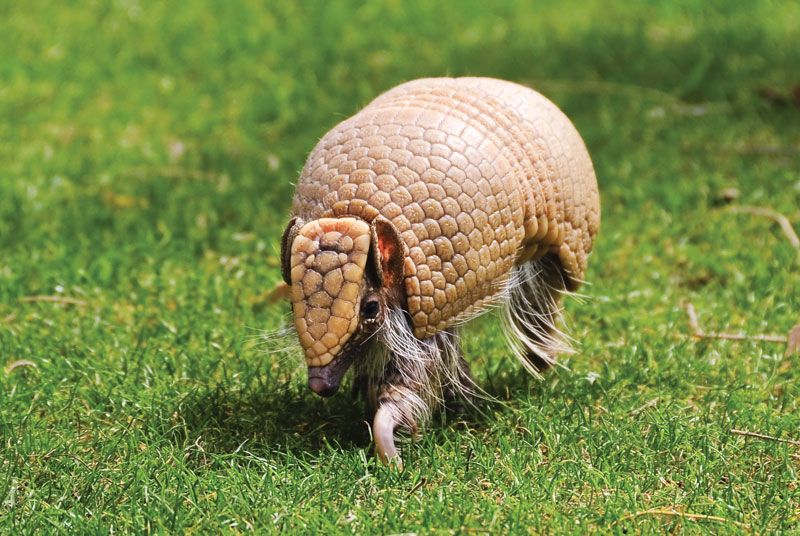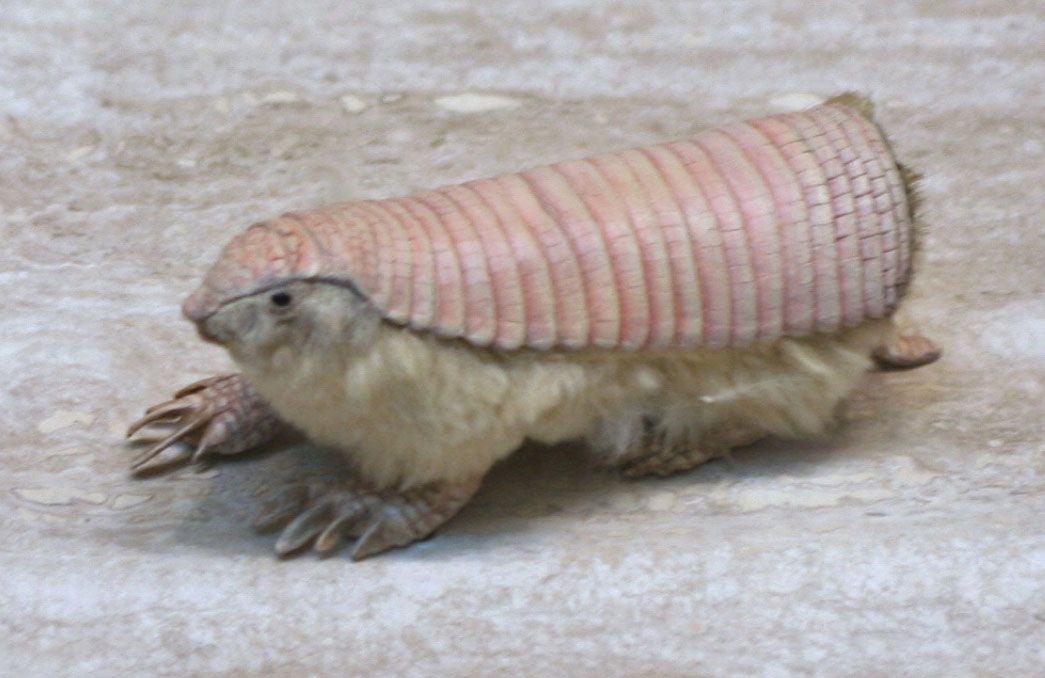Have you ever wondered what makes the furry armadillo so extraordinary? With its unique blend of soft, insulating fur and a robust, shell-like back, this creature seems to defy the usual conventions of mammalian adaptation.
Introduction to the Furry Armadillo
The world of fauna is vast and filled with surprising oddities, and the furry armadillo is one such marvel. Unlike its more famous scaled cousins, the pink fairy armadillo possesses traits that make it a fascinating subject for anyone interested in the quirks of nature. This nocturnal mammal, native to Argentina, blends elements of the bizarre and the practical in ways that are both functional and aesthetically intriguing.
Why Furry Armadillos Stand Out
When you think of armadillos, the image of their armored, protective shells may come to mind. However, the furry armadillo breaks this mold with its soft, fluffy underside that contrasts starkly with its hard back. This unique adaptation not only sets it apart from its relatives but also offers various survival advantages.
The Importance of Fur in the Animal Kingdom
Fur plays a critical role in the animal kingdom, offering insulation, camouflage, and sometimes even tactile sensation. The furry armadillo’s fur is no exception. It helps the creature maintain its body temperature and blend into its desert environment, offering an extra layer of protection against predators. Let’s delve into the specifics of why this fur-covered oddball is so special.
The Pink Fairy Armadillo: A Closer Look
Habitat and Lifestyle
Native to the sandy plains and dunes of central Argentina, the pink fairy armadillo (Chlamyphorus truncatus) has evolved to thrive in its unique habitat. Its environment demands specific adaptations for survival, from its digging prowess to its nocturnal habits.
| Feature | Description |
|---|---|
| Habitat | Sandy plains and dunes of central Argentina |
| Activity Time | Nocturnal; active during the night |
| Diet | Insects, worms, and plant matter |
| Adaptations | Strong digging claws, armored back, and soft furred underside |
Physical Characteristics
The pink fairy armadillo is small, typically just 4-5 inches long, making it the smallest species of armadillo. Its most striking feature is its pinkish-colored, flexible shell fused to its back, which gives this armadillo its name. The shell’s color comes from blood vessels visible through its thin armor.
Function of Fur
The pink fairy armadillo’s fur may seem like an odd feature for an armored creature, but it serves multiple purposes. Firstly, the fur provides essential insulation, helping maintain body heat during cool nights in the desert. Secondly, the soft texture of the fur helps the armadillo blend into its sandy environment, providing camouflage from potential predators.

Armored and Furry: A Dual Defense System
The Armor
The pink fairy armadillo’s back is covered in an armor-like shell made up of bony plates called osteoderms. This armor isn’t just for show; it helps protect the armadillo from predators and harsh environmental conditions.
The Role of Fur
While the armor provides a protective shield, the fur adds an extra layer of defense. The combination of hard and soft tissues allows the armadillo to efficiently regulate its body temperature and stay hidden from threats. It’s a dual defense system that showcases the adaptability of this fascinating creature.
Survival Techniques
Burrowing Skills
One of the most remarkable skills of the pink fairy armadillo is its ability to burrow. With strong, clawed forelimbs, it can dig quickly into the sandy ground, creating intricate tunnel systems where it spends most of its time.
Diet and Foraging
Though small, the pink fairy armadillo is an efficient forager. Its diet consists mainly of insects, worms, and some plant matter, which it skillfully digs up with its claws. The fur also plays a role here, helping to keep dirt and debris from sticking to the armadillo as it digs.

Pink Fairy Armadillo in the Ecosystem
Role and Importance
While it may seem like a curious oddity, the pink fairy armadillo plays an important role in its ecosystem. By burrowing, it helps aerate the soil, promoting plant growth and offering homes for other creatures. Its diet also keeps insect populations in check.
Fun Facts About Pink Fairy Armadillos
- Nocturnal Habits: These creatures are primarily nocturnal, which means they are most active at night. This nocturnal lifestyle helps them avoid the extreme heat of their desert habitat.
- Solitary Creatures: Pink fairy armadillos are generally solitary animals, only coming together during mating seasons.
- Temperature Regulation: The fur not only provides camouflage but also acts as an insulator, helping the armadillo maintain a stable body temperature in varying environmental conditions.

Similar Unusual Furry Creatures
Hairy Frogfish: Fur in the Ocean
While discussing unique furry creatures, the hairy frogfish deserves mention. Though not truly furry, its hair-like appendages mimic fur and play a crucial role in its survival. These structures help the frogfish blend into its coral reef habitat, allowing it to ambush unsuspecting prey effectively.
Giant Anteater: The Role of Fur
Another fascinating furry creature is the giant anteater, known for its odd appearance and specialized diet. The anteater’s thick fur protects it from biting insects and harsh weather, underscoring the role of fur in different environmental contexts.
Platypus: An Aquatic Oddity
The platypus’s thick, waterproof fur is another example of nature’s ingenuity. This unique mammal, which lays eggs and has a duck-like bill, uses its fur to stay warm while hunting underwater.
Woolly Bear Caterpillar: Fur as Insulation
Fur isn’t exclusive to mammals; even some insects have adapted fur-like features for survival. The woolly bear caterpillar’s bristly fur helps it endure the harsh winter months, showcasing how fur can be a critical adaptation in various species.
Conservation Status and Efforts
Current Status
Unfortunately, the pink fairy armadillo faces significant threats from habitat destruction and human activity. Its small population size and specific habitat requirements make it particularly vulnerable to environmental changes.
Conservation Efforts
Efforts are underway to preserve the unique habitat of the pink fairy armadillo. These include setting up protected areas and implementing sustainable land use practices to ensure that this fascinating creature can continue to thrive.

Conclusion: The Fascination with the Furry Armadillo
You may now see why the furry armadillo, especially the pink fairy armadillo, stands out in the animal kingdom. It’s not just its unique blend of armor and fur that makes it remarkable, but also its array of adaptations that allow it to thrive in its challenging environment. These creatures remind us of the endless possibilities and marvels nature has to offer.
We often overlook the incredible variety and ingenuity present in the animal world. Highlighting such unique creatures as the furry armadillo helps us appreciate the fascinating diversity of life on Earth, and underscores the importance of conserving these natural wonders.

